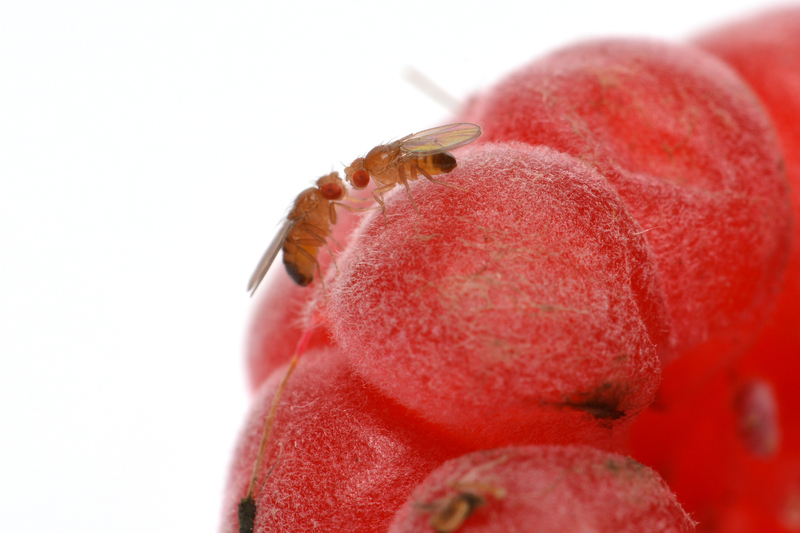Essential tips for creating a dust-free and allergen-reduced living space
Posted on 09/09/2025
Essential Tips for Creating a Dust-Free and Allergen-Reduced Living Space
Maintaining a dust-free and allergen-reduced living space is crucial for ensuring a healthy and comfortable home environment. Whether you or your loved ones suffer from allergies, respiratory issues, or simply wish to breathe cleaner air, implementing an effective strategy can yield significant health benefits. In this comprehensive guide, we will uncover practical tips, expert insights, and proven methods to help you minimize dust, control allergens, and transform your home into a true sanctuary.
Understanding the Sources of Dust and Allergens in Your Home
Before diving into actionable steps, it's helpful to identify common sources of indoor dust and allergens. Both can originate from external and internal sources, and understanding these origins can help tailor your cleaning and prevention efforts.
- Outdoor contaminants: Pollen, spores, dirt, and exhaust particles often make their way inside via open windows, shoes, and pets.
- Textiles and upholstery: Curtains, carpets, cushions, and bedding trap dust mites, pet dander, and shed skin cells.
- Pets: Hair, dander, saliva, and tracked-in debris are spread by our furry friends throughout the home.
- HVAC systems: Air vents, filters, and ductwork can harbor and circulate dust, mold, and other allergens if not regularly maintained.
- Everyday activities: Cooking, cleaning, and movement stir up particulate matter settled on surfaces and in the air.

Why Allergens and Dust Are a Serious Health Concern
Exposure to indoor dust and airborne allergens can contribute to a range of health issues, especially in individuals with asthma, allergies, or weakened immune systems. It may cause:
- Respiratory irritation
- Allergic reactions
- Headaches or sinus problems
- Worsening of chronic respiratory conditions
- Poor sleep quality
Reducing these contaminants is not just about cleanliness--it's about living well and breathing easier.
Top Essential Tips for a Dust-Free and Allergen-Reduced Home
Let's explore the most effective, science-backed strategies and daily routines you can implement to create a truly dust-free and low-allergen living space.
1. Choose the Right Cleaning Tools and Products
Effective cleaning is the first step toward reducing household dust and allergens. However, not all cleaning methods are equally efficient. Here's how to optimize your efforts:
- Use high-efficiency vacuum cleaners equipped with HEPA filters to trap microscopic particles instead of releasing them back into the air.
- Opt for microfiber cloths and mops, which attract and hold onto dust much better than standard fabrics.
- Avoid feather dusters that simply disperse dust into the air--wipe surfaces with damp cloths to ensure particles are captured and removed.
- Select cleaning products labeled as fragrance-free and hypoallergenic to minimize chemical irritants.
2. Establish a Routine Cleaning Schedule
Consistency is key. Setting a regular cleaning schedule ensures dust and allergen build-up is kept under control. A suggested plan might include:
- Daily: Sweep or vacuum high-traffic areas, wipe kitchen counters, and tidy up clutter.
- Weekly: Dust surfaces, vacuum carpets, wash bedding, mop floors, and sanitize bathroom surfaces.
- Monthly: Deep-clean upholstery, curtains, blinds, and under furniture.
- Seasonally: Wash windows, air out mattresses, and inspect HVAC filters.
3. Limit Soft Furnishings and Clutter
If possible, minimize items that attract and trap dust. This strategy is especially helpful if you or a family member is highly sensitive to allergens. Consider:
- Choosing hardwood, tile, or vinyl flooring instead of wall-to-wall carpets.
- Selecting furniture with simple designs and washable covers.
- Reducing knick-knacks, throw pillows, and unnecessary fabric decor.
- Organizing bookshelves and enclosed cabinets to limit exposed surfaces.
4. Prioritize Air Filtration and Ventilation
Improving indoor air quality is crucial for an allergen-reduced home. Quality ventilation and filtration systems ensure fresh air circulation and actively remove particles:
- Install HEPA air purifiers in bedrooms and living areas--especially if you have allergies, asthma, or pets.
- Open windows periodically (weather and pollen count permitting) to refresh indoor air.
- Use exhaust fans in kitchens and bathrooms to reduce humidity, preventing mold and dust mites.
- Regularly inspect and replace HVAC filters--ideally every 3 months or as directed by the manufacturer.
5. Pay Attention to Bedrooms for Better Sleep
Beds and bedrooms are prime locations for dust mite and allergen accumulation. To ensure a clean, allergy-safe sleeping space:
- Wash sheets, pillowcases, and blankets weekly in hot water (>130?F/54?C) to kill dust mites.
- Encapsulate mattresses and pillows in allergen-proof covers.
- Keep pets off the bed and out of the bedroom when possible.
- Replace pillows every 1-2 years for optimum hygiene.
6. Control Humidity to Prevent Mold and Dust Mite Growth
Humidity levels above 50% can encourage both mold and dust mite proliferation. To maintain ideal indoor humidity (defined as 30-50%), try these tips:
- Use dehumidifiers in damp areas, such as basements or bathrooms.
- Fix leaks and clean up spills promptly to prevent water accumulation.
- Air out bathrooms, kitchens, and laundry rooms after use.
- Consider investing in a hygrometer to monitor humidity levels year-round.
7. Keep Pets Clean and Groomed
If you have pets, part of your battle is managing pet-related allergens:
- Bathe and groom pets regularly (preferably outdoors or in easily cleaned areas).
- Vacuum pet beds and play areas at least once a week.
- Wipe paws and coats after outdoor walks to minimize tracked-in pollen and dust.
- Designate pet-free zones in the house--especially bedrooms.
8. Manage Entryways and Reduce Outdoor Allergen Entry
Much of your home's dust arrives from outside. Create a barrier to keep out dirt, pollen, and environmental allergens:
- Place doormats inside and outside all entryways, and clean them regularly.
- Request that family and guests remove shoes before entering living areas.
- Store jackets, umbrellas, and shoes in a mudroom or entry closet--never on living room furniture.
Smart Upgrades and Investments for an Allergen-Free Home
While regular cleaning goes a long way, consider these upgrades for long-term reduction of dust and allergens:
- Allergen-proof covers: Invest in zippered covers for mattresses, box springs, and pillows.
- Vacuum with HEPA filtration: Upgrade older models to capture even the smallest particles.
- Non-textile window treatments: Choose blinds or shades that can be easily wiped down.
- Replace wall-to-wall carpeting: Especially in bedrooms, where you spend one-third of your life.
- Professional air duct cleaning: Schedule this every few years, especially if you see visible mold or dust coming from vents.
- UV-C lights and air scrubbers: Consider advanced purification systems to eliminate germs and allergens.
Common Mistakes to Avoid in Dust and Allergen Control
As you strive to create a dust-free, low-allergen living space, be careful to avoid these typical pitfalls:
- Neglecting high and low surfaces: Dust gathers on baseboards, ceiling fans, tops of cabinets, and under furniture.
- Overusing chemical cleaners: Strong scents and chemicals can themselves trigger allergic reactions.
- Infrequent filter changes: Dirty HVAC or air purifier filters circulate dust instead of capturing it.
- Storing clutter: Unused items and stacks of paper or textiles collect dust quickly.
- Ignoring home repairs: Cracks or leaks encourage mold, while open windows without screens usher in common allergens.

Frequently Asked Questions About Reducing Dust and Allergens
Can houseplants help improve indoor air quality?
Some houseplants can slightly improve air quality by absorbing certain toxins. However, soil and standing water can harbor mold. Choose plants carefully, avoid overwatering, and use sterile soil to reap benefits without increasing allergens.
How often should I clean air purifiers and HVAC filters?
Check filters monthly, and replace every 1-3 months depending on manufacturer's recommendations, overall air quality, and presence of pets or allergens at home.
Is it better to dust or vacuum first?
Dust first, then vacuum. This way, any dust that falls to the floor during cleaning will be captured by the vacuum cleaner.
Does steam-cleaning help with allergies?
Absolutely. Steam cleaning carpets and upholstery can kill dust mites and remove particulate matter, making it an effective part of a comprehensive dust and allergen reduction strategy.
Conclusion: Create a Healthier, Happier Home by Reducing Dust and Allergens
Transforming your living space into a dust-free and allergen-reduced environment may require some lifestyle adjustments and investment in proper tools or equipment, but the rewards--cleaner air, fewer allergy symptoms, and improved wellbeing--are well worth the effort. By following the essential tips outlined in this guide, you'll be well on your way towards creating a more inviting, comfortable, and healthy home for you and your loved ones.
Remember, consistency and mindfulness are the secrets to success. Monitor your progress, listen to your body, and enjoy the peace of mind that comes with a truly clean and allergen-managed space.



